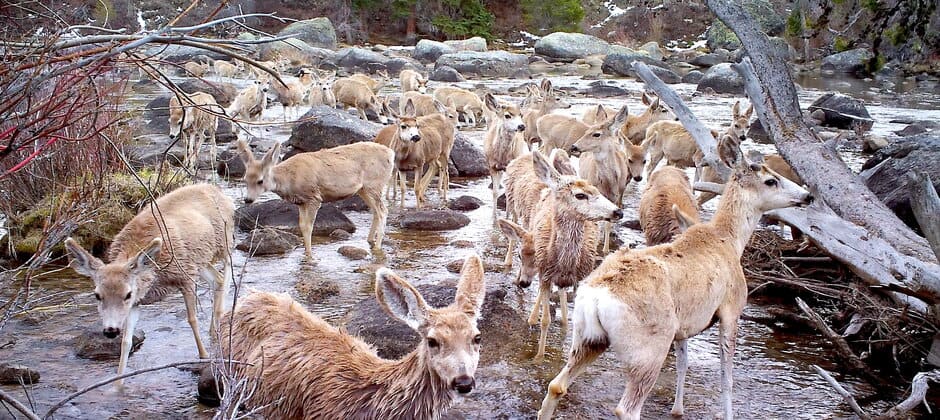Share this article
DOI supports Wyoming’s migration corridor approach
U.S. Secretary of the Interior Deb Haaland supports Wyoming’s approach to designing and implementing wildlife migration strategies to conserve wildlife and protect migration corridors, she announced in a meeting with the state’s Governor Mark Gordon in August.
The collaboration-based strategy Gordon implemented through an executive order in February 2020 is twofold: It’s designed to advance conservation on public and private lands to support wildlife populations while simultaneously enhancing the economy by abiding by private land owner rights and preserving multiple-use opportunities across landscapes.
The executive order prompted Wyoming’s creation of a Statewide Migration Corridor advisory group, which includes representatives from oil and gas, mining, agriculture, conservation and recreation groups throughout the state. The advisory group has emphasized the importance of “stakeholder engagement,” particularly with new county-level, corridor-specific working groups.
The U.S. Department of the Interior not only supported this order but also announced $2 million in grants through the Improving Habitat Quality in Western Big Game Migration Corridors and Habitat Connectivity Program for big-game habitat, stopover areas and migration corridors throughout the West.
This program was prompted by another executive-level order signed by then-DOI Secretary Ryan Zinke in 2018. Over the past three years, the grant program has distributed over $9 million for 40 projects on public and private lands across the West. The program also aligns with the America the Beautiful initiative, prioritizing the enhancement of existing wildlife corridors. The new grant funding will help support wildlife migration corridors in three areas of Wyoming: Baggs, Platte Valley and Sublette.
The Wyoming program specifically focuses on mule deer (Odocoileus hemionus) and pronghorn antelope (Antilocapra americana). The seasonal migration patterns of these ungulates play a crucial role in sustaining animal survival as their populations travel from summer to winter ranges. Over time, increased human development in the West has forced these ungulates to alter routes or stop migration, threatening populations and increasing highway hazards.
Header Image:
A group of mule deer crosses a stream on a migration corridor in Wyoming.
Credit: Tanner Warder - Wyoming Cooperative Fish and Wildlife Research Unit








